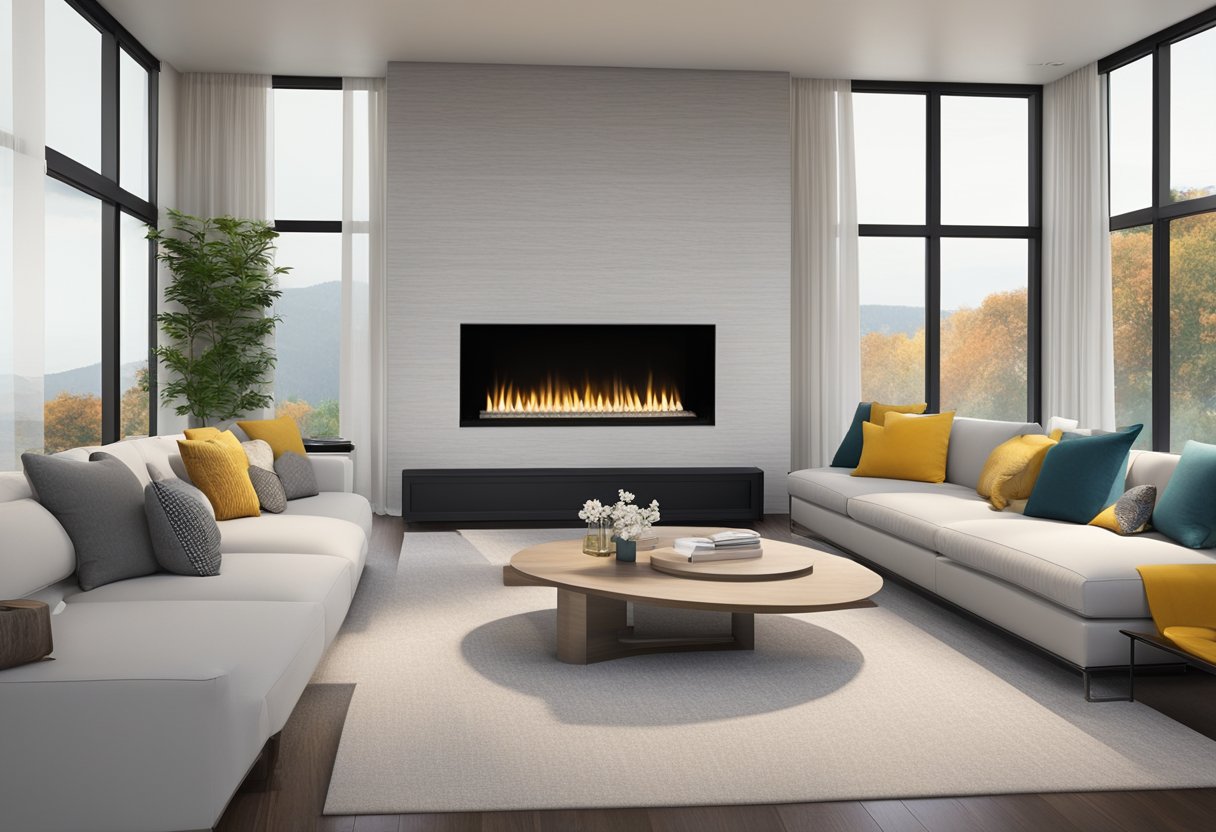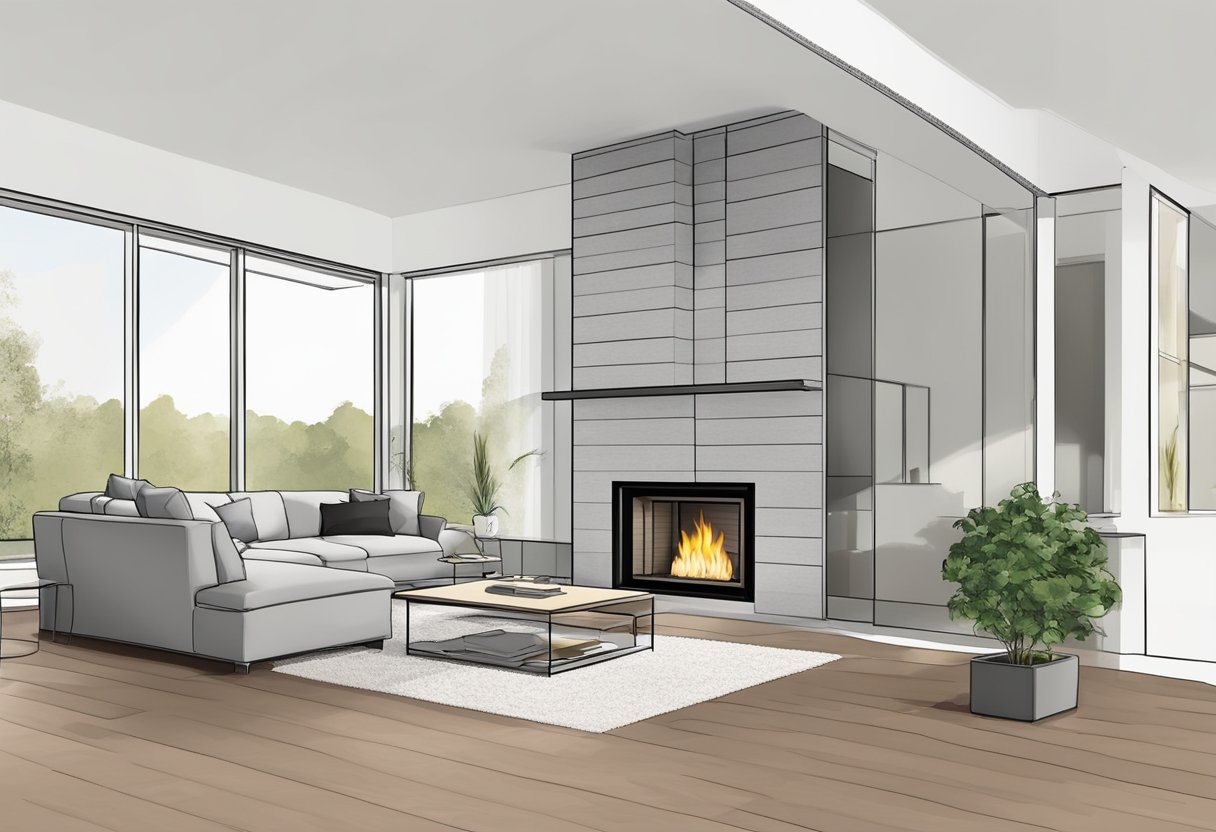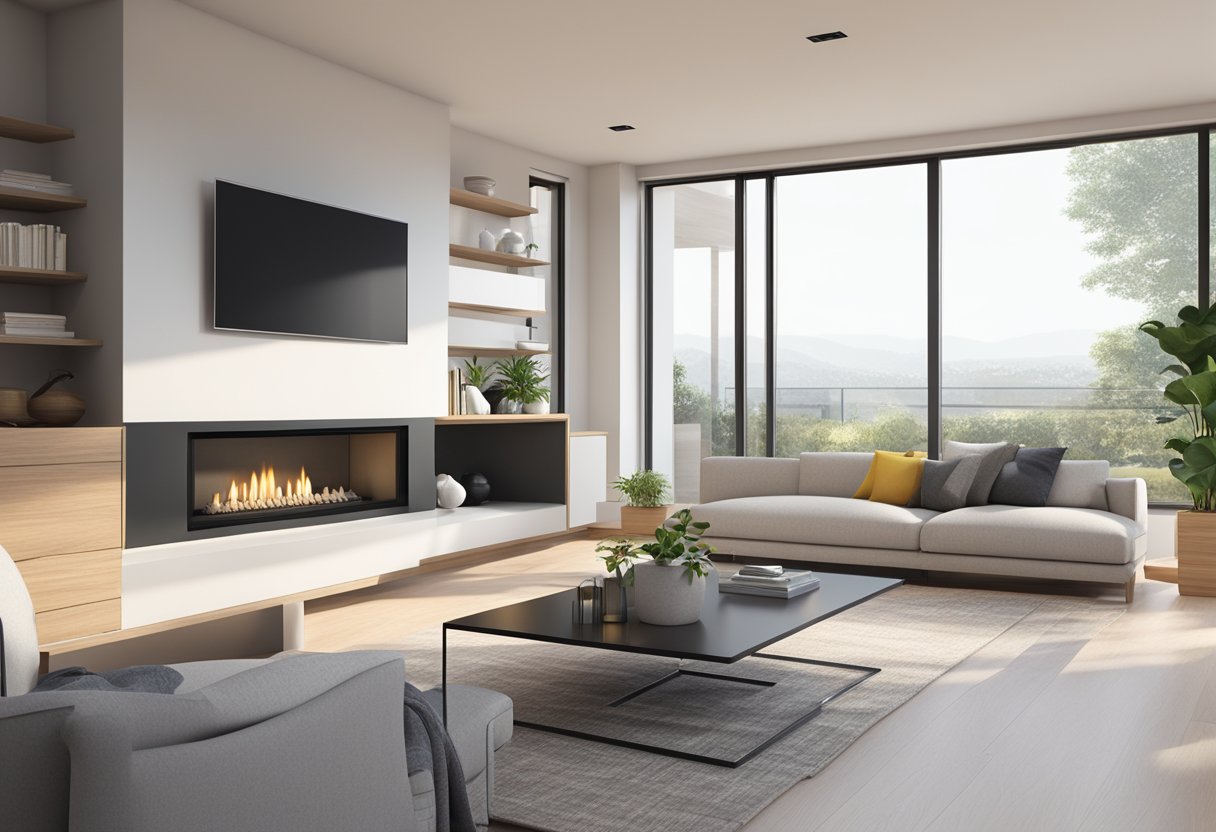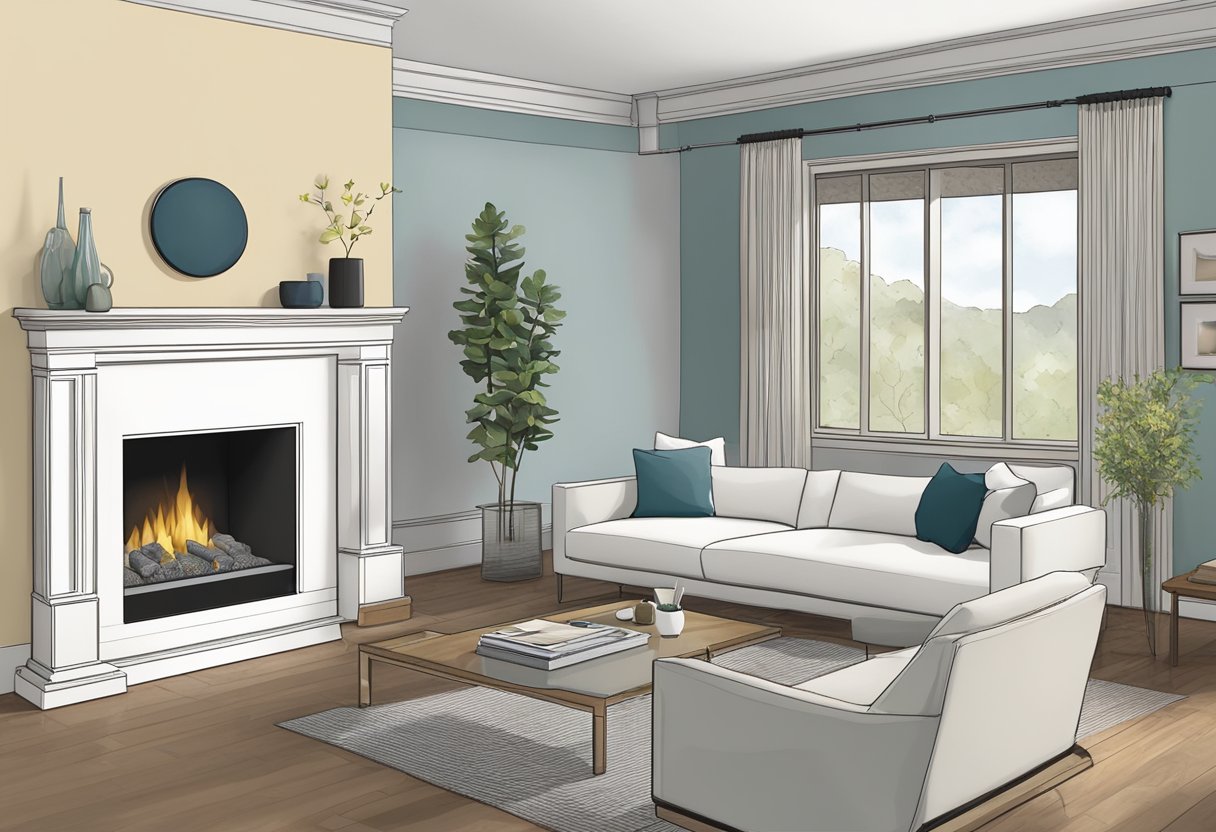Does a Gas Fireplace Need a Chimney? Essential Venting Solutions for Today’s Homes
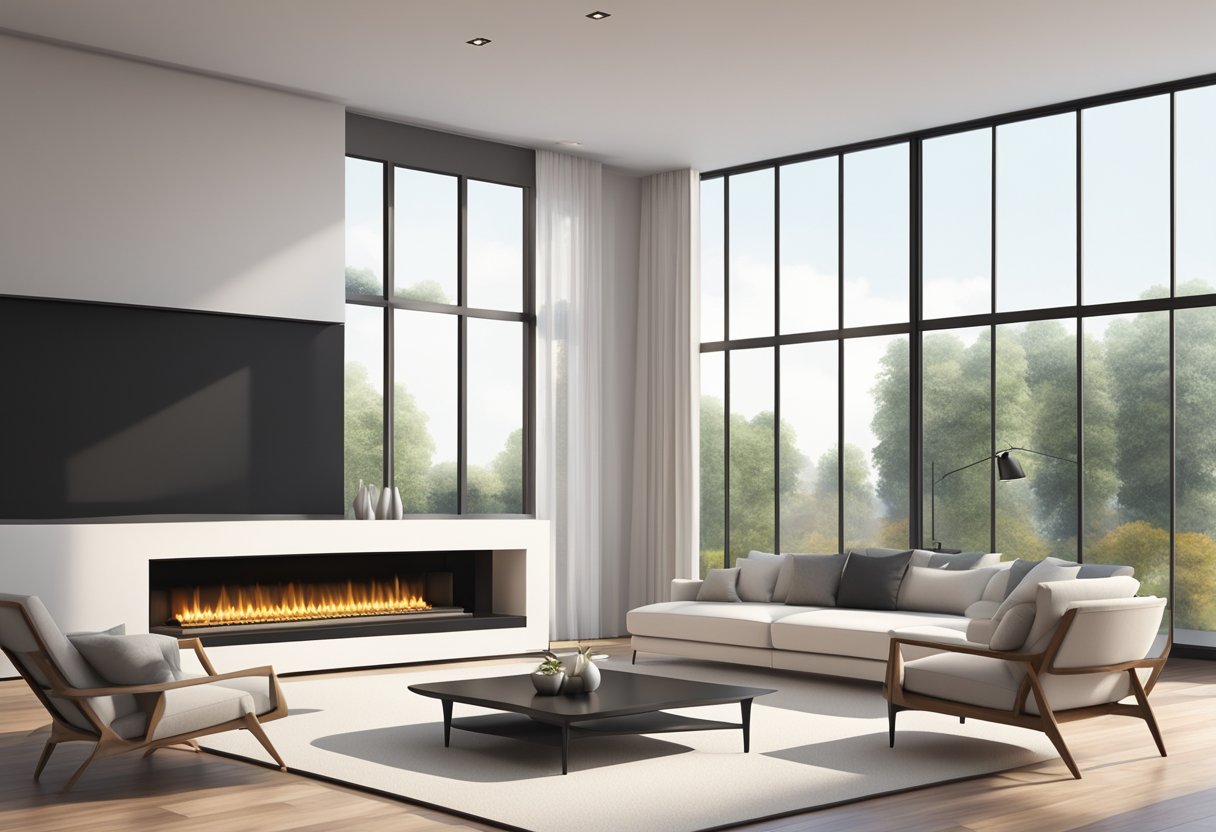
Introduction
Gas fireplaces have become increasingly popular in modern homes, offering warmth and ambiance without the hassle of traditional wood-burning fireplaces. Many homeowners wonder if these convenient heating options require a chimney like their traditional counterparts. Gas fireplaces do not necessarily need a traditional chimney, as there are several venting options available.
The venting system for a gas fireplace plays a crucial role in safely removing combustion byproducts from your home. While some gas fireplaces can be installed without a chimney, proper venting is still essential for most models. We’ll explore the different types of gas fireplaces and their corresponding venting requirements to help you make an informed decision for your home.
Understanding the venting options for gas fireplaces is vital for ensuring safety, efficiency, and compliance with local building codes. From direct vent systems to ventless models, we’ll examine the pros and cons of each option to help you choose the best solution for your specific needs and preferences.
Key Takeaways
- Gas fireplaces offer multiple venting options, with some not requiring a traditional chimney
- Proper venting is crucial for safety and efficiency in most gas fireplace installations
- The choice of venting system depends on factors like fireplace type, home layout, and local regulations
Understanding Gas Fireplaces and Venting Basics
Gas fireplaces offer a convenient and efficient heating option for modern homes. Proper venting is crucial for safety and performance, ensuring the removal of combustion byproducts and maintaining indoor air quality.
Types of Gas Fireplaces
Gas fireplaces come in two main varieties: vented and ventless. Vented gas fireplaces require a chimney or venting system to expel combustion gases outside the home. These include direct vent and natural vent (B-vent) options.
Direct vent fireplaces use a sealed combustion system, drawing air from outside and expelling exhaust through a dual-chamber pipe. This design is efficient and versatile, allowing for various installation locations.
Natural vent fireplaces rely on existing chimneys or vertical vents. They draw indoor air for combustion and release byproducts through the flue.
Ventless gas fireplaces don’t require external venting. They’re designed to burn gas more completely, producing minimal emissions. However, they may not be legal in all areas due to safety concerns.
Principles of Venting and Combustion
Proper venting is essential for gas fireplace safety and efficiency. The primary goal is to remove combustion byproducts, including carbon monoxide, water vapor, and other gases.
Venting systems work on the principle of natural draft or forced air. Natural draft relies on hot air rising through the vent, while forced air systems use fans to enhance airflow.
Adequate oxygen supply is crucial for complete combustion. Vented fireplaces draw air from outside or the room, ensuring a steady oxygen flow. Ventless units use indoor air, which can impact room oxygen levels over time.
We must consider factors like vent placement, length, and termination when installing gas fireplaces. Proper installation ensures optimal performance and prevents issues like backdrafting or incomplete combustion.
Chimney Options for Gas Fireplaces
Gas fireplaces offer various venting solutions, ranging from traditional chimneys to modern alternatives. We’ll explore the key differences between these options and explain how direct and natural venting systems work.
Traditional Chimneys vs. Modern Solutions
Traditional chimneys, originally designed for wood-burning fireplaces, can be adapted for gas fireplaces. However, modern solutions provide more flexibility. Direct vent gas fireplaces don’t require a traditional chimney, offering greater installation options.
A masonry chimney can be retrofitted for a gas fireplace, but it may need a liner to prevent moisture damage. This option maintains the classic look of a traditional fireplace.
Modern venting solutions include:
- Wall-mounted vents
- Roof-mounted vents
- Power vents for longer runs
These alternatives allow for installation in spaces where a traditional chimney isn’t feasible or desired.
Direct Vent and Natural Vent Explained
Direct vent systems use a sealed combustion chamber with two pipes: one for air intake and one for exhaust. This design is highly efficient and safe, as it doesn’t use indoor air for combustion.
Key benefits of direct vent systems:
- Flexible installation options
- Improved energy efficiency
- Enhanced safety
Natural vent fireplaces, also known as B-vent systems, use indoor air for combustion and expel exhaust through a pipe. They typically require vertical venting through the roof.
Natural vent characteristics:
- Less expensive than direct vent
- May be less efficient
- Requires proper chimney or flue
We recommend consulting a professional to determine the best venting option for your specific needs and home layout.
Installation and Safety Considerations
Proper installation and safety measures are crucial when setting up a gas fireplace. We’ll explore key aspects to ensure your gas fireplace operates safely and efficiently in your home.
Ensuring Proper Ventilation and Air Intake
Gas fireplaces require adequate ventilation to function safely. Direct-vent gas fireplaces draw air from outside for combustion and expel exhaust gases through a sealed pipe. This system maintains indoor air quality and prevents harmful gases from entering living spaces.
Ventless gas fireplaces, while not needing external venting, still require careful consideration. We recommend installing them in well-ventilated areas with sufficient room volume to ensure proper air circulation.
Regular maintenance of venting systems is essential. We advise scheduling annual inspections to check for blockages, leaks, or damage that could compromise safety.
The Importance of Carbon Monoxide Detectors
Carbon monoxide (CO) is an odorless, colorless gas that can be lethal in high concentrations. Installing carbon monoxide detectors is a critical safety measure for homes with gas fireplaces.
We recommend placing CO detectors:
- Near sleeping areas
- On each floor of the home
- In the same room as the gas fireplace
Regular testing and battery replacement ensure these detectors function properly. We advise following manufacturer guidelines for maintenance and replacement schedules.
Adhering to Local Codes and Regulations
Compliance with local building codes and regulations is non-negotiable when installing a gas fireplace. These guidelines vary by location but typically cover:
- Minimum clearances from combustible materials
- Proper venting requirements
- Permits and inspections
We strongly recommend professional installation to ensure compliance with all relevant codes. Certified technicians are familiar with local regulations and can ensure your gas fireplace meets all safety standards.
Regular inspections by qualified professionals help maintain compliance and identify potential issues before they become hazards.
Maintenance and Upkeep of Gas Fireplace Systems
Gas fireplaces require regular care to ensure safe and efficient operation. Proper maintenance extends the lifespan of the system and prevents potential hazards.
Routine Cleaning and Inspections
We recommend cleaning the glass and interior of your gas fireplace at least twice a year. Use a soft cloth and specialized gas fireplace glass cleaner to remove soot and debris.
Vacuum the firebox and check for any signs of wear or damage. Clean the logs and embers according to the manufacturer’s instructions.
Annual inspections by a qualified technician are crucial. They’ll examine the gas lines, burners, and ventilation system for leaks or blockages.
Check the batteries in your remote control and carbon monoxide detector regularly. Replace them as needed to ensure proper functioning.
We advise testing the fireplace’s ignition system monthly. If you notice any issues with lighting or flame quality, contact a professional immediately.
Addressing Ventilation System Issues
Proper ventilation is essential for gas fireplace safety. We suggest inspecting visible venting components for damage or obstruction regularly.
Clear any debris from the vent termination outside your home. Ensure there are no bird nests or leaves blocking the airflow.
If you notice unusual odors or smoke when operating your fireplace, turn it off immediately. This could indicate a ventilation problem that requires professional attention.
For direct-vent fireplaces, check the gaskets around the glass front annually. Replace them if they show signs of wear to maintain a proper seal.
We recommend having a chimney sweep inspect and clean the venting system every few years, even for gas fireplaces. This prevents the buildup of corrosive deposits that can damage the system over time.
Advantages and Disadvantages of Venting Options
Gas fireplaces offer different venting options, each with unique benefits and drawbacks. We’ll explore how vented and ventless models compare in terms of efficiency, aesthetics, and installation flexibility.
Comparing Vented and Ventless Models
Vented gas fireplaces require an outlet for combustion gases, typically through a wall or roof. They provide a more traditional fireplace experience and are generally considered safer. Vented models offer better air quality since they expel potentially harmful gases outside.
Ventless fireplaces don’t need external venting, making them more flexible for installation. However, they release combustion byproducts into the living space, which can be a concern for some homeowners. Ventless models are often more energy-efficient as they don’t lose heat through venting.
Evaluating Energy Efficiency and Aesthetics
Energy efficiency varies between vented and ventless options. Ventless fireplaces are typically more efficient as they retain all the heat produced. Vented models lose some heat through the venting system but provide better air quality.
Aesthetically, vented fireplaces often look more realistic, with larger, more natural-looking flames. Ventless models may have smaller flames but offer more flexibility in design and placement. Some key considerations:
- Vented:
- More traditional look
- Better air quality
- Higher installation costs
- Ventless:
- More energy-efficient
- Flexible installation
- Potential air quality concerns
We recommend weighing these factors carefully when choosing between vented and ventless options for your home.
Frequently Asked Questions
Gas fireplaces offer various venting options beyond traditional chimneys. Modern designs provide flexibility in installation and ventilation methods, while safety considerations remain paramount. Let’s address some common questions about gas fireplace venting.
Can you vent a gas fireplace without a traditional chimney?
Yes, you can vent a gas fireplace without a traditional chimney. Direct vent fireplaces are a popular option that eliminates the need for a conventional chimney. These units use a sealed combustion system with a dual-layer pipe that expels exhaust gases and draws in fresh air from outside.
Direct vent systems can be installed through an exterior wall or the roof, providing flexibility in fireplace placement. This method is efficient and safe, making it a preferred choice for many homeowners.
What are the venting requirements for installing a direct vent gas fireplace?
Direct vent gas fireplaces require proper installation to ensure safety and efficiency. The main requirement is a sealed vent pipe that extends from the fireplace to the outdoors, either through a wall or the roof.
The vent pipe must maintain proper clearances from combustible materials and adhere to local building codes. We recommend consulting the manufacturer’s guidelines and working with a certified professional to ensure correct installation.
How is venting a gas fireplace to the outside typically done?
Venting a gas fireplace to the outside is typically done through one of three methods:
- Direct venting: Uses a dual-layer pipe for both exhaust and air intake.
- Natural venting (B-vent): Utilizes a single pipe connected to an existing chimney or flue.
- Power venting: Employs a fan-assisted system to force exhaust gases out through a smaller diameter pipe.
The chosen method depends on the fireplace model, home layout, and local regulations.
Are there safety concerns related to vent-free gas fireplaces?
Vent-free gas fireplaces do raise some safety concerns. While they don’t require external venting, they release combustion byproducts directly into the living space.
These units can potentially deplete oxygen levels and increase indoor humidity. We advise caution when considering vent-free options, especially in small or tightly sealed homes. Regular maintenance and proper use are crucial for safe operation.
Do gas fireplaces require professional chimney sweeping services?
Gas fireplaces generally don’t require traditional chimney sweeping. However, they do benefit from regular professional inspections and maintenance.
A certified technician should check the venting system, clean any debris, and ensure all components are functioning correctly. This helps maintain efficiency and safety, even without a conventional chimney.
Is an open chimney necessary for a gas fireplace to function properly?
An open chimney is not necessary for a gas fireplace to function properly. Many gas fireplaces don’t need a traditional chimney at all.
Modern gas fireplaces often use alternative venting methods like direct venting or power venting. These systems are designed to work efficiently without relying on an open chimney structure.

 We Ship Anywhere USA & Canada
We Ship Anywhere USA & Canada


